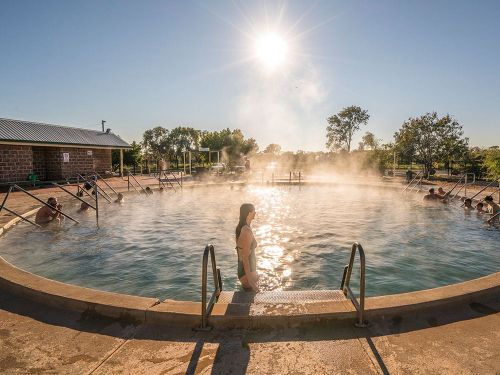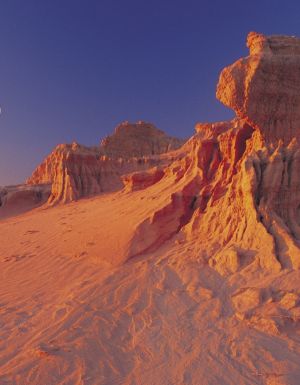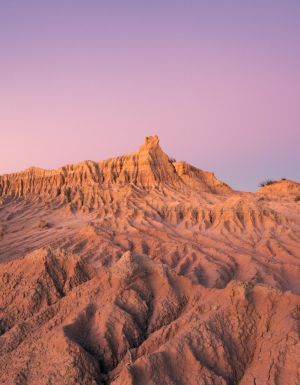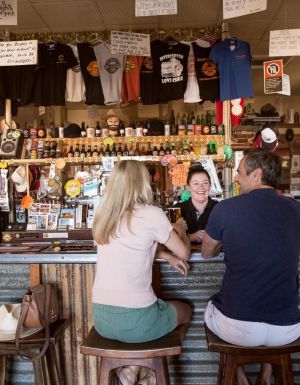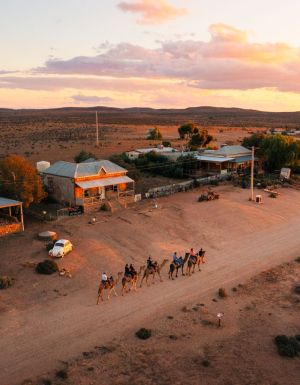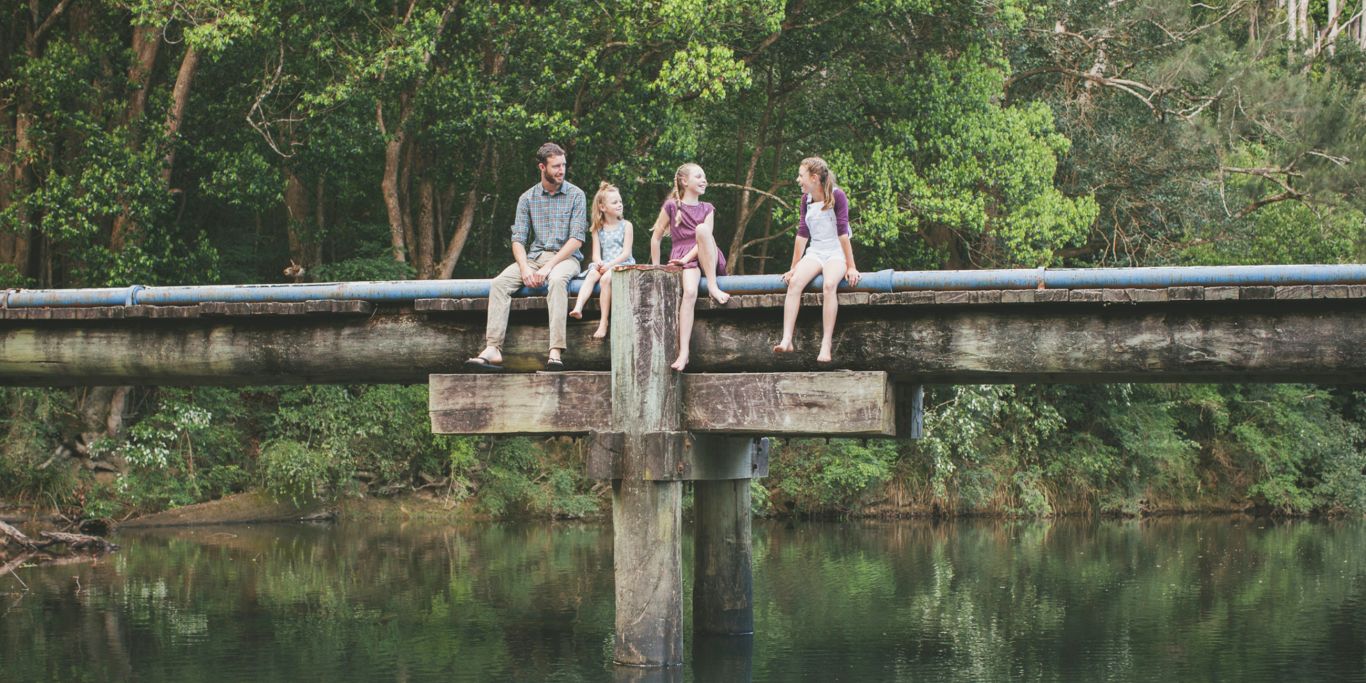Lightning Ridge may be the Black Opal capital of Australia serving up quirky characters and bizarre adventures. But it now comes with a side of great coffee.

Some people used to say that outback towns this far from ‘civilization’ could only serve lacklustre takeaway food and intolerable instant coffee, but there is no trace of that myth today in Lightning Ridge.
Real Coffee in the Outback
The north-western NSW town’s foodie offering is robust, buoyed by a duo of Italian restaurants and a trio of cafes – Opal Street , Morilla’s and Busy Bee – that actually do ‘real’ coffee. Yes, real specialty coffee in the outback.

While ‘the Ridge’ has all the creature comforts and punches well above its culinary weight for a town well, exact population unknown, perish the thought that it has ‘sold out’ and become a bush Bondi or outback Fitzroy.
Oh no, Lightning Ridge has been and always will be powered by its ragtag collection of colourful, untameable personalities. People who famously came for a week and stayed for a lifetime because the blue, green and red fire of those black opals wedged in their mind’s eye.
Lightning Ridge’s Arts tail
Their often inexplicable stories manifest in unlikely ways everywhere you look in this free-range town. On the outskirts, 18-metre-tall Stanley the Emu greets you from the roadside.

Creator of this VW-Beetle-bodied ‘Big Thing’, local artist John Murray, embodies the Ridge’s ‘Back o’ Buggery’ bush spirit. His whimsical ‘realism’-style paintings embrace the outback hues and ‘human folly’ of the Ridge, on display to browse and buy at John Murray Art Gallery on Opal Street.

A deeper understanding of Lightning Ridge’s penchant for playing by its own rules can be gained at the Chambers of the Black Hand gallery (and opal shop).

The sandstone walls of Ron Canlin’s old opal mine have become an unlikely canvas for hundreds of carvings and murals, from tributes to Lord of the Rings and a subterranean Last Supper carving to a statue of Elvis Presley and an Egyptian chamber with ‘humorous hieroglyphics’. Send your kids cross-eyed by setting them the ‘Where’s-Wally?’ challenge.
Black Opal Capital of Australia
Perched on the cusp of an ancient inland Gondwana sea, Lightning Ridge is home to a perplexing array of options for visitors curious about black opals.
Take a stickybeak around aptly named Lunatic Hill Open Cut mine to see one of the richest sources of black opal ever found. You might even kick one up yourself. It’s now a fitting monument to the brave, foolhardy and occasionally jackpot-hitting miners.

To see the finished products in their best light, check out the stunning creations of jeweller Jo Lindsay at Lost Sea Opals boutique. Witness the gems being cut and polished by a true craftswoman.

The earth here cradles some of the world’s rarest fossils and, excitingly, prized 100-million-year-old opalised fossils. But you have to know where to look so the Australian Opal Centre runs a limited number of seasonal fossil digs, in conjunction with the Australian Geographic Society. The six-day expeditions have uncovered some mind-blowing specimens, including Australia’s smallest dinosaur babies (book ahead).

Plans for the new significant Australian Opal Centre building are cresting the horizon. The energy-efficient, two-storey structure will become an extraordinary national monument to Australia’s national gemstone.
Lightning Ridge’s distinctive architecture
The Ridge’s shanty-chic architecture is as colourful as the gemstones that funded it. Beer Can House – built by Gary and Pat Holms back in the days when we used to drink out of steel cans – and perhaps Lightning Ridge’s most recognisable structure, the Camelot-esque, ironstone-boulder Amigo’s Castle (made by Vittorio ‘Amigo’ Stefanato), are standouts in an ocean of eccentricity.

Finding hidden gems among the sprawling labyrinth is a cinch for visitors, thanks to the distinctly Ridge-onian phenomena of coloured-coded car-door tours. Four self-drive safaris cover as much unconventionality as you can take (get your maps from the Lightning Ridge Visitor Information Centre, off Bill O’Brien Way).
See Lightning Ridge on a tour
To see if you can strike it lucky, Outback Opal Tours offers a comprehensive town tour (including an underground mine visit) and a full-day jaunt that ventures into ‘opal-rush’ territory, where folks live in camps without power or town water.

Visiting the ‘Pubs in the Scrub’ of Grawin Opal Fields is a highlight. Beer and banter flow easily at the Sheepyard Inn , Grawin Club in the Scrub and the Glengarry Hilton . And, if you’re lucky (and game), you might even score a personal mine tour from a friendly patron.

As the light begins to change, take a slow drive out of town, perch at Nettleton’s First Shaft Lookout, and witness sunset ignite the Coocoran Opal Fields. Then boomerang back into the Ridge to catch an under-the-stars “cinematic celebration of Lightning Ridge" at the SPARK Outdoor Cinematic Exhibition.

The perfect way to de-brief from a wild day in the north-west is to indulge in unpretentious Ridge-style wellness. Slink into the mineral-rich waters of the Artesian Bore Bath (a toasty 41 degrees) for a soothing soak in an open-air pool, while you reflect on a compelling day in astonishing Lightning Ridge – a place where the bizarre soon becomes normal and the normal bizarre.
To plan your holiday to Lightning Ridge, visit www.walgett.nsw.gov.au/tourism.
